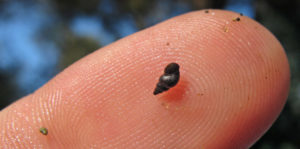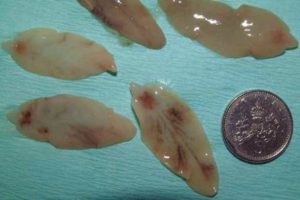Liver Fluke Risk Assessment
6 September 2017When planning liver fluke control local knowledge and experience should always be taken into account. The risk of infection will vary by year, region, farm and even individual field.
- Do you consider your farm to be high or low risk for liver fluke? If you think that liver fluke is absent you could try confirming this by blood testing 6 homebred ewes/cows (that have only ever grazed on your holding) for fluke antibodies. On low risk farms six lambs/calves (animals in their first grazing season) could be similarly tested to find out if they have been infected this year. If you are monitoring trace elements this test can be carried out on the same blood samples.
- Is it a high or low risk year in your area? Fluke forecasts are based on climate data – particularly rainfall. Wet summers tend to increase the risk of fluke problems in the autumn and winter. Regional forecasts can be found at nadis.org.uk.
- Where have the stock grazed from mid August onwards? Are there any areas where mud snails would like to live?
 The mud snails are key. No snails means no risk of liver fluke infection. They like to live in areas that are permanently wet e.g. around ditches or slow flowing water courses. After a short dry spell, areas of ground that still squelch and sink when you walk across them are possible snail sites. The snails need to have been infected with liver fluke earlier in the year so –
The mud snails are key. No snails means no risk of liver fluke infection. They like to live in areas that are permanently wet e.g. around ditches or slow flowing water courses. After a short dry spell, areas of ground that still squelch and sink when you walk across them are possible snail sites. The snails need to have been infected with liver fluke earlier in the year so –
- What grazed the field earlier in the year? Fields with snails that have been continuously set stocked with sheep all year tend to be highest risk in autumn. Fields grazed by cattle in spring/early summer can be lower risk while fields that were ungrazed in spring and summer e.g. re-seeds should be low risk.
- Have there been any problems with liver fluke in particular fields in the past? This suggests that the conditions in those fields suit both snail and parasite. Unless improved or managed differently the same issue could arise.
- Are there any current problems that could be due to liver fluke? g. sudden deaths, weight loss, poor growth rates or lethargy – if so get them investigated.
If possible remove animals, especially sheep, from the highest risk fields as soon as you can in autumn. At this time of year low risk areas could be saved for certain groups of stock such as fattening lambs.
Heather Stevenson, healther.stevenson@sac.co.uk
Sign up to the FAS newsletter
Receive updates on news, events and publications from Scotland’s Farm Advisory Service

